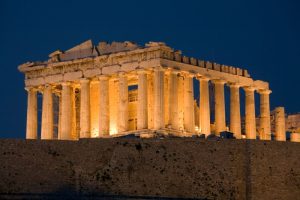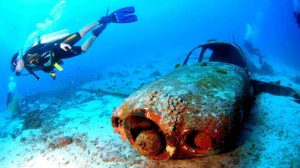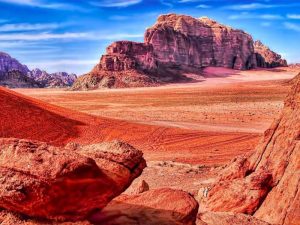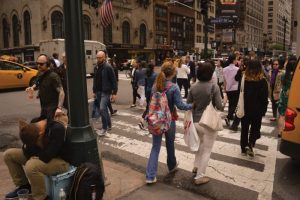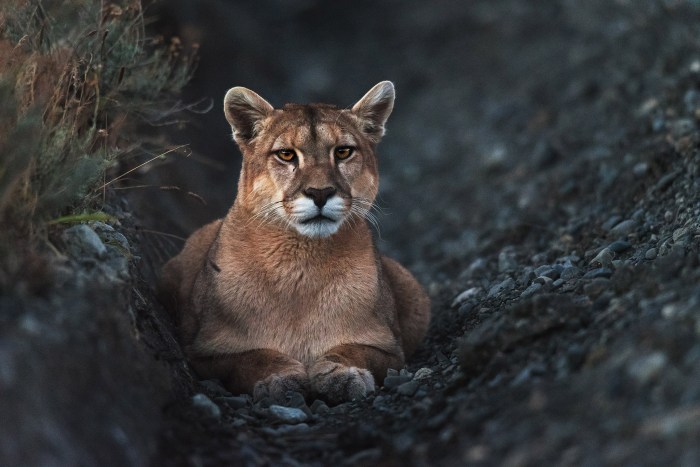
Capturing the untamed beauty of the natural world through the lens requires careful planning and a keen eye for detail. This exploration of the best wildlife photography locations worldwide delves into the factors that elevate a site above the rest, considering biodiversity, accessibility, photographic opportunities, and conservation efforts. We’ll journey across continents, from the sprawling savannas of Africa to the frozen landscapes of Antarctica, highlighting both well-known hotspots and hidden gems offering unique photographic challenges and rewards.
We’ll examine how different geographical environments, from lush rainforests to arid deserts, present unique photographic opportunities and challenges, comparing and contrasting the experiences and photographic potential of diverse regions. Furthermore, we’ll explore how various travel styles, from wildlife photography tours to voluntourism projects, can enhance the overall experience while promoting responsible and ethical wildlife photography practices.
Defining “Best” Wildlife Photography Locations

Defining the “best” wildlife photography locations is subjective, depending heavily on the photographer’s priorities and desired subjects. However, several key factors consistently contribute to a location’s high ranking. A truly exceptional location offers a compelling combination of readily observable wildlife, ease of access, advantageous photographic conditions, and a commitment to conservation.Factors Influencing a Location’s RankingSeveral intertwined factors determine whether a location is considered a prime spot for wildlife photography.
These factors should be carefully considered when evaluating potential destinations. Simply having abundant wildlife isn’t enough; accessibility, photographic opportunities, and conservation practices all play crucial roles. A location teeming with elusive animals hidden deep within an inaccessible rainforest might be less desirable than a more accessible area with a high concentration of easily observable species, providing consistently good photographic opportunities.
Wildlife Diversity and Abundance
High animal diversity and abundance are paramount. The ideal location boasts a variety of species, increasing the chances of capturing diverse and interesting images. The abundance of a specific species is also crucial; a location with only a few scattered individuals of a rare animal might not be as rewarding as one with a larger, more easily observable population.
For instance, the Masai Mara in Kenya is renowned for its high density of large mammals, offering consistent photographic opportunities, while the Amazon rainforest, while incredibly biodiverse, presents significant challenges in locating specific species for photography.
Accessibility and Infrastructure
Accessibility significantly impacts a location’s ranking. Locations with well-maintained trails, roads, or guided tours are more appealing than remote areas requiring extensive trekking or specialized equipment. The presence of adequate infrastructure, including lodging, transportation, and communication facilities, enhances the overall photographic experience. Comparing the Serengeti National Park in Tanzania, which offers a range of lodging options and guided safari tours, to a remote jungle in Borneo illustrates this point.
The Serengeti’s accessibility makes it more appealing to a wider range of photographers.
Photographic Opportunities: Light and Backgrounds
The quality of light and the nature of backgrounds are essential elements for compelling wildlife photographs. Locations with consistently good lighting conditions, such as the open plains of the African savanna during the golden hour, are highly desirable. The presence of aesthetically pleasing backgrounds, free from distracting elements, further enhances the photographic opportunities. Consider the difference between photographing a tiger in a cluttered jungle versus one in a more open setting with a visually appealing background.
The latter presents a significantly better photographic opportunity.
Conservation Efforts and Ethical Considerations
A location’s commitment to conservation and ethical wildlife viewing practices significantly influences its desirability. Areas with robust conservation programs, promoting sustainable tourism and minimizing the impact on wildlife, are preferable. Locations where wildlife is disturbed or exploited for tourism are less appealing to ethical photographers. For example, a location with strict regulations on approaching wildlife and responsible tour operators is more desirable than one where wildlife is harassed for photographic opportunities.
Rubric for Evaluating Wildlife Photography Locations
A scoring rubric can help objectively assess potential locations. Each category below is weighted based on its relative importance.
| Category | Weight | Scoring (1-5, 5 being best) |
|---|---|---|
| Wildlife Diversity & Abundance | 30% | [Score based on species variety and population density] |
| Accessibility & Infrastructure | 25% | [Score based on ease of access, lodging, transportation, etc.] |
| Photographic Opportunities (Light & Backgrounds) | 25% | [Score based on lighting conditions and background aesthetics] |
| Conservation Efforts & Ethical Practices | 20% | [Score based on conservation programs and responsible tourism practices] |
Popular vs. Less-Known Locations
Popular locations often offer ease of access and established infrastructure but may suffer from overcrowding and potential disturbance to wildlife. Less-known locations might provide more unique photographic opportunities and a more intimate wildlife experience but may require more effort to reach and may lack essential infrastructure. The choice depends on individual priorities and preferences. For example, while the Galapagos Islands offer unique wildlife encounters, the high cost and potential for crowding might deter some photographers, while a lesser-known national park in a remote region might offer a more solitary but potentially challenging experience.
Geographic Regions for Wildlife Photography
Choosing the right location is paramount for successful wildlife photography. The diversity of habitats across the globe offers a vast array of photographic opportunities, each presenting unique challenges and rewards. Factors such as animal behavior, weather conditions, and accessibility all play a crucial role in determining the ideal location and time of year for a specific photographic project.
The following table provides a snapshot of some top wildlife photography destinations categorized by continent. It’s important to note that these are just a few examples, and many other incredible locations exist within each region. Furthermore, the “ideal time to visit” is a generalization and can vary based on specific species and weather patterns.
Top Wildlife Photography Locations by Continent
| Continent | Location | Notable Wildlife | Ideal Time to Visit |
|---|---|---|---|
| Africa | Masai Mara National Reserve, Kenya | Lions, elephants, cheetahs, wildebeest, zebras | July-October (Great Migration) |
| Asia | Kaziranga National Park, India | One-horned rhinoceroses, elephants, tigers | November-April |
| North America | Yellowstone National Park, USA | Bison, elk, wolves, grizzly bears | Summer (June-August) |
| South America | Amazon Rainforest, Brazil | Jaguars, monkeys, macaws, anaconda | Dry season (June-August) |
| Europe | Svalbard, Norway | Polar bears, walruses, arctic foxes | Summer (June-August) |
| Australia | Kakadu National Park, Australia | Saltwater crocodiles, kangaroos, wallabies, birds | Dry season (May-October) |
| Antarctica | Antarctica Peninsula | Penguins, seals, whales | Summer (November-March) |
Geographic Environment and Photographic Challenges
Different geographical environments present unique photographic challenges and opportunities. Rainforests, for example, offer incredible biodiversity but pose challenges due to dense vegetation, low light, and high humidity. Photographers often need specialized equipment, such as fast lenses and sturdy tripods, to overcome these obstacles. Savannas, on the other hand, provide wide-open spaces and excellent visibility, but the intense heat and unpredictable weather can be demanding.
Arctic regions present their own set of difficulties, including extreme cold, limited daylight hours, and the need for specialized clothing and equipment.
Comparative Analysis of Photographic Opportunities
Comparing the Amazon rainforest, the Masai Mara, and the Arctic regions highlights the diversity of wildlife photography experiences. The Amazon offers incredible opportunities for macro photography and capturing vibrant colors in a dense, lush environment, but requires patience and specialized equipment. The Masai Mara provides iconic wildlife encounters in an open landscape, offering opportunities for landscape and wildlife photography in abundant sunlight.
The Arctic, in contrast, presents a stark, dramatic landscape with unique wildlife adaptations to the extreme cold. Photographers here must be prepared for challenging weather conditions and limited daylight. Each region provides unique photographic opportunities, catering to different skill levels and interests.
Specific Wildlife Photography Locations

Choosing the right location is paramount for successful wildlife photography. The best locations offer not only abundant wildlife but also suitable environments for capturing compelling images. Consider factors like accessibility, the time of year, and the specific photographic techniques required for optimal results.
Renowned Wildlife Photography Locations and Ideal Conditions
Five locations stand out for their exceptional wildlife viewing and photographic opportunities. The ideal time to visit and suitable photographic techniques vary significantly depending on the location and species.
- Serengeti National Park, Tanzania: Famous for its abundant big cat population (lions, leopards, cheetahs), wildebeest migrations, and diverse birdlife. The best time to visit is during the dry season (June to October) when animals congregate around water sources, making for easier spotting and photography. Long lenses (400mm or more) are essential, along with a sturdy tripod for stable shots, especially in low light conditions.
Consider using a camouflage blind for closer, unobtrusive images.
- Galapagos Islands, Ecuador: Unique marine and terrestrial wildlife, including marine iguanas, blue-footed boobies, and giant tortoises. The best time to visit is during the dry season (June to December) for clearer waters and better visibility for underwater photography. Wide-angle lenses are ideal for capturing the dramatic landscapes and diverse wildlife. Underwater photography requires specialized equipment, including waterproof housings and strobes.
- Masai Mara National Reserve, Kenya: Known for its spectacular wildebeest migration (July to October) and diverse predator populations. The dry season offers the best photographic opportunities due to concentrated wildlife. Long lenses and a fast shutter speed are crucial to capture the action of the migration and the agility of predators. A vehicle is essential for navigating the reserve.
- Yellowstone National Park, USA: Home to bison, elk, wolves, and bears. Summer offers the best visibility and accessibility. Long lenses are essential for capturing wildlife from a safe distance. Patience is key, as wildlife sightings can be unpredictable. Consider using a teleconverter to extend your reach further.
- Amazon Rainforest, South America: Incredibly biodiverse, featuring a vast array of birds, monkeys, insects, and reptiles. The dry season (July to November) offers better accessibility and visibility. Macro lenses are essential for capturing the detail of insects and smaller creatures. Patience and a keen eye are crucial for spotting camouflaged wildlife.
Lesser-Known but Rewarding Wildlife Photography Locations
Beyond the well-trodden paths lie numerous locations offering unique wildlife encounters and photographic challenges.
- Danum Valley Conservation Area, Borneo: Abundant wildlife, including orangutans, clouded leopards, and various primate species. Accessibility is limited, requiring a guided tour. The dense rainforest presents significant photographic challenges, including low light conditions and difficult terrain.
- Etosha National Park, Namibia: Large numbers of elephants, lions, cheetahs, and zebras. Excellent accessibility via a well-maintained road network. The vast open plains offer good photographic opportunities, but the harsh sunlight can be challenging.
- Torres del Paine National Park, Chile: Guanacos, pumas, and a diverse birdlife. Accessibility varies depending on the time of year. Challenging weather conditions can impact photography.
Comparison: Masai Mara vs. Serengeti
Both the Masai Mara and the Serengeti are renowned for their big game and the Great Migration. However, they offer distinct experiences for wildlife photographers. The Masai Mara is generally considered more accessible, with a well-developed tourist infrastructure, while the Serengeti is vast and requires more extensive travel. The cost of a safari in the Masai Mara tends to be higher than in the Serengeti.
Photographic opportunities are abundant in both locations, but the Serengeti’s sheer scale can offer more diverse landscapes and wildlife encounters.
Wildlife Photography and Travel Styles
Wildlife photography is intrinsically linked to travel. The pursuit of capturing unique wildlife moments often necessitates journeys to diverse and sometimes remote locations. The type of trip undertaken significantly impacts the photographic opportunities and the overall experience, influencing both the subjects encountered and the logistical challenges faced. Exploring the intersection of various travel styles with wildlife photography reveals a spectrum of possibilities, each offering unique perspectives and challenges.
Different travel styles present distinct advantages and disadvantages for wildlife photographers. The choice of travel style should be carefully considered, balancing personal preferences with the specific photographic goals and ethical considerations of responsible wildlife photography.
Religious Pilgrimages and Wildlife Photography
Religious pilgrimages often take place in areas with significant biodiversity. The juxtaposition of spiritual significance and natural beauty can create powerful photographic opportunities.
For instance, a pilgrimage to a sacred mountain range might offer chances to photograph rare birds of prey circling high peaks or endemic mammals in the surrounding forests. Responsible photography in these settings requires utmost respect for the religious practices and the environment. Photographers should maintain a respectful distance from ceremonies and avoid disturbing wildlife or damaging the natural landscape.
- Photographing wildlife near sacred sites requires sensitivity and respect for local customs and beliefs.
- Opportunities may arise to capture images that blend spiritual and natural elements, creating unique compositions.
- Ethical considerations include minimizing disruption to religious practices and preserving the sanctity of the location.
Winter Sports Trips and Wildlife Photography
Winter sports destinations often feature stunning landscapes and unique wildlife adapted to cold climates. The snowy environment can provide a beautiful backdrop for wildlife photography, but requires specific preparations.
Imagine capturing images of snow leopards in the Himalayas or arctic foxes in the Alaskan tundra during a skiing or snowboarding trip. The combination of adventure and wildlife photography offers a truly enriching experience. However, responsible photography must prioritize animal welfare and environmental protection, avoiding disruption to their natural behaviors and habitats.
- Wildlife photography opportunities exist in snowy environments, including arctic foxes, snow leopards, and various bird species.
- Specialized equipment, such as cold-weather clothing and cameras with appropriate settings, is essential.
- Responsible practices include maintaining a safe distance from animals and minimizing environmental impact.
Island Hopping and Marine Wildlife Photography
Island hopping expeditions offer exceptional opportunities for marine wildlife photography. The diverse ecosystems of islands, from coral reefs to open ocean, support a rich array of species.
Island hopping allows photographers to explore various habitats, capturing images of sea turtles nesting on beaches, dolphins leaping in the waves, or colorful fish in vibrant coral reefs. Respecting marine life and avoiding actions that could harm the environment is crucial. This includes responsible snorkeling or diving practices and avoiding the disturbance of nesting sites.
- Island hopping provides access to diverse marine ecosystems, offering a wide range of photographic subjects.
- Specialized equipment, such as underwater cameras and housings, may be necessary.
- Responsible practices include minimizing impact on marine life and coral reefs.
Voluntourism and Wildlife Photography
Voluntourism combines travel with volunteer work, often involving conservation projects. Many conservation organizations offer opportunities to participate in projects while engaging in wildlife photography.
Participating in a sea turtle conservation project, for example, allows for close observation and photography of these magnificent creatures while contributing to their protection. The ethical considerations are paramount, ensuring that volunteer work does not disrupt wildlife or negatively impact conservation efforts. Photographers should always prioritize the conservation goals of the project.
- Voluntourism provides opportunities to photograph wildlife while contributing to conservation efforts.
- Careful selection of reputable organizations is crucial to ensure ethical and effective volunteer work.
- Responsible practices include adhering to the guidelines of the organization and prioritizing conservation goals.
Photography Tours and Wildlife Photography
Professional photography tours offer guided experiences focused on wildlife photography. These tours often provide access to specific locations and expert guidance on techniques and ethical practices.
A guided tour to a national park might offer access to areas not easily accessible independently, with expert knowledge on the behavior and locations of specific animals. These tours often incorporate ethical guidelines, promoting responsible wildlife viewing and photography. Photographers benefit from learning from experienced guides and minimizing their environmental impact.
- Photography tours provide access to prime wildlife locations and expert guidance on techniques and ethics.
- Tours often incorporate ethical guidelines, promoting responsible wildlife viewing and photography.
- Choosing reputable tour operators is essential to ensure ethical practices and responsible wildlife viewing.
Festival Travel and Wildlife Photography
Wildlife-related festivals often coincide with specific wildlife events, such as bird migrations or animal gatherings. These festivals can provide unique photographic opportunities.
Attending a bird migration festival can offer exceptional chances to photograph various bird species in large numbers. Responsible photography during these events involves respecting the animals and the environment, avoiding disturbing their natural behaviors and adhering to any regulations imposed by the festival organizers.
- Wildlife-related festivals offer opportunities to photograph wildlife in concentrated areas.
- Festivals often provide educational opportunities and insights into wildlife conservation.
- Responsible practices include respecting the animals and the environment, and adhering to festival guidelines.
Desert Expeditions and Wildlife Photography
Desert expeditions can provide opportunities to photograph elusive desert wildlife adapted to harsh conditions. These environments require careful planning and preparation.
Imagine photographing nocturnal animals like desert foxes or reptiles under the starry desert sky. Responsible photography in deserts requires careful consideration of the fragile ecosystem. Minimizing environmental impact, avoiding disturbance of wildlife, and respecting local regulations are crucial.
- Desert expeditions offer opportunities to photograph unique desert wildlife adapted to arid conditions.
- Specialized equipment and preparation are necessary to cope with extreme temperatures and conditions.
- Responsible practices include minimizing environmental impact and respecting the fragility of desert ecosystems.
Underwater Adventures and Marine Life Photography
Underwater adventures provide unparalleled access to the underwater world, offering a wealth of photographic opportunities. This requires specialized equipment and training.
From coral reefs teeming with life to encounters with larger marine mammals, underwater photography requires specialized equipment and training. Respecting marine life and the environment is paramount. Avoiding contact with marine animals, maintaining a safe distance, and refraining from touching or disturbing coral reefs are crucial for responsible underwater photography.
- Underwater adventures provide access to a vast array of marine life, offering unique photographic opportunities.
- Specialized equipment, such as underwater cameras and housings, is essential.
- Responsible practices include minimizing impact on marine life and coral reefs.
Art and Architecture Tours and Wildlife Photography
Even in urban or culturally rich settings, wildlife can be found. Art and architecture tours can offer surprising photographic opportunities.
Observing birds nesting in the architectural details of a historic building or capturing images of urban wildlife like foxes or raccoons can be rewarding. Responsible photography in urban settings requires respect for public spaces and the avoidance of disturbing wildlife or causing damage to property. Respecting local regulations and private property rights is crucial.
- Urban and cultural settings can offer unexpected opportunities to photograph wildlife in unique contexts.
- Responsible practices include respecting public spaces and private property, and avoiding disturbance to wildlife.
- Photographing wildlife in urban environments offers a unique perspective on the coexistence of nature and human civilization.
Illustrative Examples of Wildlife Photography
Iconic wildlife photographs transcend mere documentation; they become powerful narratives, capturing fleeting moments of nature’s drama and beauty. Analyzing these images reveals the artistry and technical skill involved in creating compelling wildlife photography.
Analysis of Three Iconic Wildlife Photographs
Three photographs exemplify the power of composition, lighting, and storytelling in wildlife photography. First, consider the image often cited as one of the greatest wildlife photographs ever taken: a lone wolf howling at the moon, silhouetted against a vast, star-studded sky. The composition uses the rule of thirds effectively, placing the wolf off-center to create visual balance. The low-light conditions, likely captured using a long exposure and high ISO, enhance the dramatic mood.
The photographer’s use of backlighting accentuates the wolf’s form, transforming it into a symbol of wildness and solitude. The story implied is one of isolation, resilience, and the untamed spirit of nature.Secondly, imagine a photograph of a cheetah pursuing its prey across the African savanna. The shallow depth of field blurs the background, drawing the viewer’s attention to the intense focus and speed of the cheetah and its prey – perhaps a gazelle.
The fast shutter speed freezes the action, capturing the dynamism of the hunt. The lighting, likely taken during the golden hour for warm tones, further enhances the drama. The photographer likely used a telephoto lens to capture the details from a safe distance. The narrative conveyed is one of survival, the relentless cycle of life and death in the wild.Finally, picture a close-up shot of a hummingbird hovering near a vibrant flower.
The photographer likely employed macro photography techniques, using a specialized lens to capture the incredible detail of the hummingbird’s feathers and the flower’s intricate structure. The shallow depth of field isolates the subjects, creating a sense of intimacy. The soft, diffused lighting, possibly achieved through natural shade or a diffuser, avoids harsh shadows and highlights the iridescent colors of the hummingbird.
The story here is one of delicate beauty, highlighting the intricate relationship between pollinator and plant.
Hypothetical Wildlife Photography Project: Snow Leopards in the Himalayas
This project focuses on capturing images of snow leopards in their natural Himalayan habitat. The planning stage would involve extensive research on snow leopard behavior, migration patterns, and suitable locations within the Himalayas. Location scouting would be crucial, involving consultation with local experts and possibly employing remote sensing technology to identify areas with high snow leopard activity. Equipment selection would prioritize high-quality telephoto lenses with image stabilization for capturing sharp images in challenging conditions.
A sturdy tripod and weather-resistant camera body are essential. Photographic strategies would focus on patience and stealth, employing camouflage techniques and using natural cover to approach snow leopards without disturbing them. Ethical considerations would be paramount, ensuring minimal impact on the animals and their environment.
Post-Processing Techniques in Wildlife Photography
Post-processing plays a vital role in enhancing wildlife images and conveying compelling stories. Techniques commonly used include sharpening to improve detail, noise reduction to minimize grain in low-light images, and adjusting contrast and saturation to enhance color and vibrancy. Cropping is frequently employed to improve composition and focus on the key subject. Selective adjustments, such as dodging and burning, can be used to highlight specific areas and create depth.
More advanced techniques, like focus stacking and HDR merging, can be used to overcome limitations of depth of field and dynamic range. However, ethical considerations remain paramount; post-processing should enhance, not fabricate, the scene. The goal is to create an image that is both visually stunning and a truthful representation of the subject and its environment.
Conclusive Thoughts
Ultimately, the pursuit of the perfect wildlife photograph is a journey of discovery, blending meticulous planning with a deep respect for the natural world. Whether you’re an experienced photographer or just beginning your wildlife photography adventure, this guide provides a roadmap to unforgettable experiences and breathtaking images. Remember that responsible wildlife photography is paramount; let your images tell a story of conservation and appreciation for the planet’s incredible biodiversity.
FAQ Compilation
What equipment is essential for wildlife photography?
A telephoto lens with a significant reach is crucial, along with a sturdy tripod for stability. A camera with good low-light performance and fast autofocus is also recommended.
How can I minimize my impact on wildlife while photographing them?
Maintain a safe distance, avoid using flash, and never interfere with their natural behavior. Research ethical guidelines for the specific location and species you’re photographing.
What are the best times of day for wildlife photography?
The “golden hour” (sunrise and sunset) generally offers the most flattering light, but the specific best time depends on the animal’s behavior and the location’s lighting conditions.
How do I choose the right location for my skill level?
Begin with locations that offer easier accessibility and less challenging environments if you are a beginner. As your skills improve, you can tackle more remote and demanding locations.
